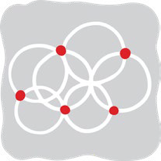Recent world events have given all of us cause to pause. As new ways face up to old ways, more marketers are asking, “What if we don’t do things the same way?” Instead of resetting to default, how about rethinking the playbook? Media is changing faster now than it has in decades. Cookies are crumbling, first-party data is rising, brand building and activation are happening in a single click, marketing is coinciding with CX, audiences and channels are further fragmenting. Now is the perfect time to take a look at how, why and where you mix your media.
Overcoming media bias for a stronger media strategy
There’s no doubt that an integrated channel mix is important to effective marketing. Many expert reports prove the incremental financial impact, aka media lift, which flows when multiple channels are coherently pressed into service. But integration isn’t the whole story. Bias that grows from perceptions about media has a cascading effect that shows up in strategy, budgets and metrics that get in the way of progress.
Take budgets. We’ve all faced pressure to allocate budgets to serve short-term goals in an effort to plump up the bottom line. In fact, budget is the biggest determinant of media allocation. It’s typically apportioned as a percentage of revenue instead of being based on the marketing job to be done.
According to a Canadian media attribution study by Accenture1, many brands are still over invested in digital. The study – which Accenture describes as a Moneyball moment for Canadian marketers – also revealed that, when measuring lift, non-digital channels provided a better return on investment.
In fact, the gap between media perception and media evidence has never been bigger according to aggregated research findings in effectiveness reports by WARC.2
You might also like:
- Match the value you deliver to customers with the value you receive through customer data
- The updated Essential Guide to Direct Mail is here
Invest in holistic channel planning
And then there’s the rapidly changing media landscape – across channels and between devices. It’s complicated. Gone are the days when channel analysis could be confined to reach, frequency, impressions and cost-per-thousand [CPM]. It’s hard to shake off old habits but they hold us back from seeing what additional media can do for our investments. At a time like this, there’s no room for media bias. If your channel planning isn’t holistic, your media strategy will come up short. According to WARC, “Objectivity and integrated planning skills are in short supply. Media has also become less understood in this time. Within both marketing departments and agencies, bias has overtaken hard evidence.”3
When many variables influence how different channels work – both alone and together – the single-minded idea of media fit just doesn’t measure up anymore. Well-integrated channel planning puts greater emphasis on aligning to the human factors that enhance relevance and improve receptivity: context, trust, emotion, environment and audience interests.
Successfully integrated campaigns assign clear roles to each channel that steps up to the plate – focusing on the full complement of strengths, capabilities and synergies needed to achieve the advertising task. Ebiquity4, a world leader in media investment analysis, looked at the true value of media for growing brands during challenging times and has identified a renaissance. “Older, more established channels including OOH and print – early victims of the rush to digital – are reasserting their right to get on media schedules for the unique contributions they can make. Those campaigns that succeed are increasingly those that play channels in position and blend them together.” Integration is a necessary step on the marketer’s journey to locate a more balanced media ecosystem. The first step is understanding how people consume media and engage in media environments.
Isn’t it time to change the channel?
INCITE will help you evaluate your media mix
Subscribe to INCITEDraw attention with direct mail
As it gets harder and harder to buy people’s attention, media publishers are trying to reduce the clutter. Marketers are seeking better quality ad environments and premium formats that make it easier to get attention without resorting to anti-social tactics like chasing people around the internet. They are attracted by the media attributes that bring together brand growth and audience relevance.
According to Ebiquity5, for long-term growth and economic recovery, the most important attributes of an advertising medium are that it:
- Increases brand salience
- Targets the right people, place, time
- Stimulates positive emotional response
- Increases campaign performance
- Maximizes campaign reach
Their analysis uncovered that direct mail is one of the most misunderstood channels when it comes to perceived performance against these attributes versus actual performance. For each of the attributes listed, direct mail answers the call, respecting the human touches that make marketing effective – bringing versatile strengths, capabilities and cross-channel synergies with it.
Increase brand salience
Screen overload has mounted, the fatigue of filtering has weighed heavier and it has become more of a challenge to stand out from the clutter. Marketers are now more inclined to lean on a channel that’s valued by audiences for being noticeable, relevant and trusted. Its tactile qualities and physical presence in the home make direct mail a prominent medium within an integrated channel mix.
Target the right people, place and time
Driven by data and responding to intent triggers, direct mail can precisely target based on geography, demographics, interests, behaviour, lifestyle and life stage. It can reach consumers in the context of their own homes, where they’re receptive to messages and in decision-making mode.
Create a positive emotional response
A neuromarketing study conducted for Canada Post suggests integrated campaigns that include direct mail get more consumer attention [39 per cent more], emotional engagement [five per cent more] and brand recall [23 per cent higher] than single-media digital campaigns. Consumers are far more likely to notice, open, read and enjoy mail than digital forms of advertising. They consider it less intrusive, more memorable and the best way to make them feel valued.6
Improve campaign performance
The media effect of combining web, email and mobile with print is 45 per cent higher than a digital-only media mix. With an average dwell time in the home of nearly eight days, and 45 per cent of mail still in the home after four weeks, according to JICMAIL data,7 the chances of being noticed and actioned are greater. And with four in five consumers displaying advertising mail that interests them in their homes, there are repeated opportunities for brand exposure and engagement.8
Improve campaign reach
Reaching targets is essential to attention and growth – aggregation across more channels is essential to achieve scale. By better defining audience composition and putting physical media in a receptive environment, direct mail can not only increase total potential campaign reach – it ensures your message is actually seen.
Engage at every step of the customer journey with direct mail
With unique qualities that make them individual contributors who also play well with others, certain media can end up playing the same roles over and over again. That’s why it’s important to know that there’s more than one way to use a channel. It’s the combination of channels and creative that brings campaigns to life. In an article aimed at improving media planning and execution, Ian McGrath, a media consultant, encourages marketers to “drop the perception that each media type can only do one thing. Marketers must move away from the old school thinking of media fit, especially as the consumption of channels continues to fragment.”9
Direct mail is a strong performance marketing channel but not everyone understands that it also has brand-building talents to offer. Just like all the best stories, direct mail has a beginning, middle and end. According to a London Research/dotdigital report, direct mail was found to play a role at every stage of the customer journey.
The Association of National Advertisers [ANA] makes a strong case for effective integration that includes direct mail when it suggests, “Rather than putting more resources and energy into the same digital channels and hoping that the results will improve, marketers should try sistering digital tactics with physical ones.”10
Unite the online and offline world
Sisterly relationships can make or break a media family. While there’s always temptation to compete for the top spot, playing favourites can weaken connections. There’s more wisdom and success to be found in combining individual strengths and capabilities. When one channel completes another, and fills gaps that have previously been ignored, there can be a significant ripple effect.
Think of these sistering ideas as infinitely inspirational rather than purely prescriptive and let your imagination play to your unique marketing context. Flex your inner mixologist and explore the innate qualities of different media and find out how direct mail can enhance integrated performance by bringing other media channels home.
TV + direct mail
TV gives you scale, fame and emotion while direct mail can intimately transfer that feeling of fame to the individual. This sistering enhances trust and increases attention on the message while doubling down on emotional recall.
Email + direct mail
A pairing that activates the efficiency and recency of emails with direct mail’s ability to further make personalization tangible and amplifying brand salience and emotional recall.
Social media + direct mail
This combo brings brand and activation together while balancing reach with personalized engagement. Add direct mail to double down on shoppable media in a more personal way that deepens exploration.
OOH + direct mail
Want to drive online traffic, maximize reach and frequency? Connect out-of-home marketing (OOH) and direct mail through mobile data to target intent and home in on the right audience composition.
Radio + direct mail
Need to find a way to bring the radio message home? Radio scores well on intimacy, frequency and right message/time/place. Direct mail can amp those qualities while also activating the message and extending its reach.
Magazine + direct mail
While magazines focus on interest-based targeting and reach, direct mail can partner to enhance exploration and evaluation. Together, magazines and direct mail can reduce price sensitivity and enhance emotional recall.
Online display + direct mail
This pairing takes online reach into the realm of personalized acquisition, with direct mail reducing diminishing returns by connecting in an at-home environment where messages have staying power. Extend video-content reach and create enhanced customer experiences.
Influencer + direct mail
Use direct mail to turn your audience into a media channel and amplify influencer marketing efforts. Direct mail can act as a social object, giving people something tangible to share.
Experiential marketing + direct mail
Elevate the excitement and personality of experiential events by using direct mail to deepen engagement with at-home interactions that improve the customer value of events and reinforce emotional connection.
This is an abridged version of the article, “Direct mail brings media home,” which appears in Media Rethink, the latest issue of INCITE.
Sources:
1 ThinkTV. The Moneyball Moment for Marketing in Canada, February 25, 2019.
2 3 McGrath, I. “10 ways to improve integrated media planning and execution,” WARC, December 11, 2020.
4 5 Ebiquity. Re-Evaluating Media for Recovery: Understanding the true value of media for growing brands during challenging times, December 9, 2020.
6 Canada Post. A Bias for Action, July 31, 2015.
7 Canada Post and Harris/Decima. Direct Mail Engagement Omni, July 2015
8 JIC Mail. Golden Insights for Direct Mail.
9 McGrath, I. “10 ways to improve integrated media planning and execution,” WARC, December 11, 2020.
10 ANA. “Diversifying with Direct Mail”, Christopher Karpenko, December 17, 2020.
Informative. Interesting. Inspiring
Visit INCITE Online for more thought-provoking marketing ideas from past issues.
Visit INCITE Online


